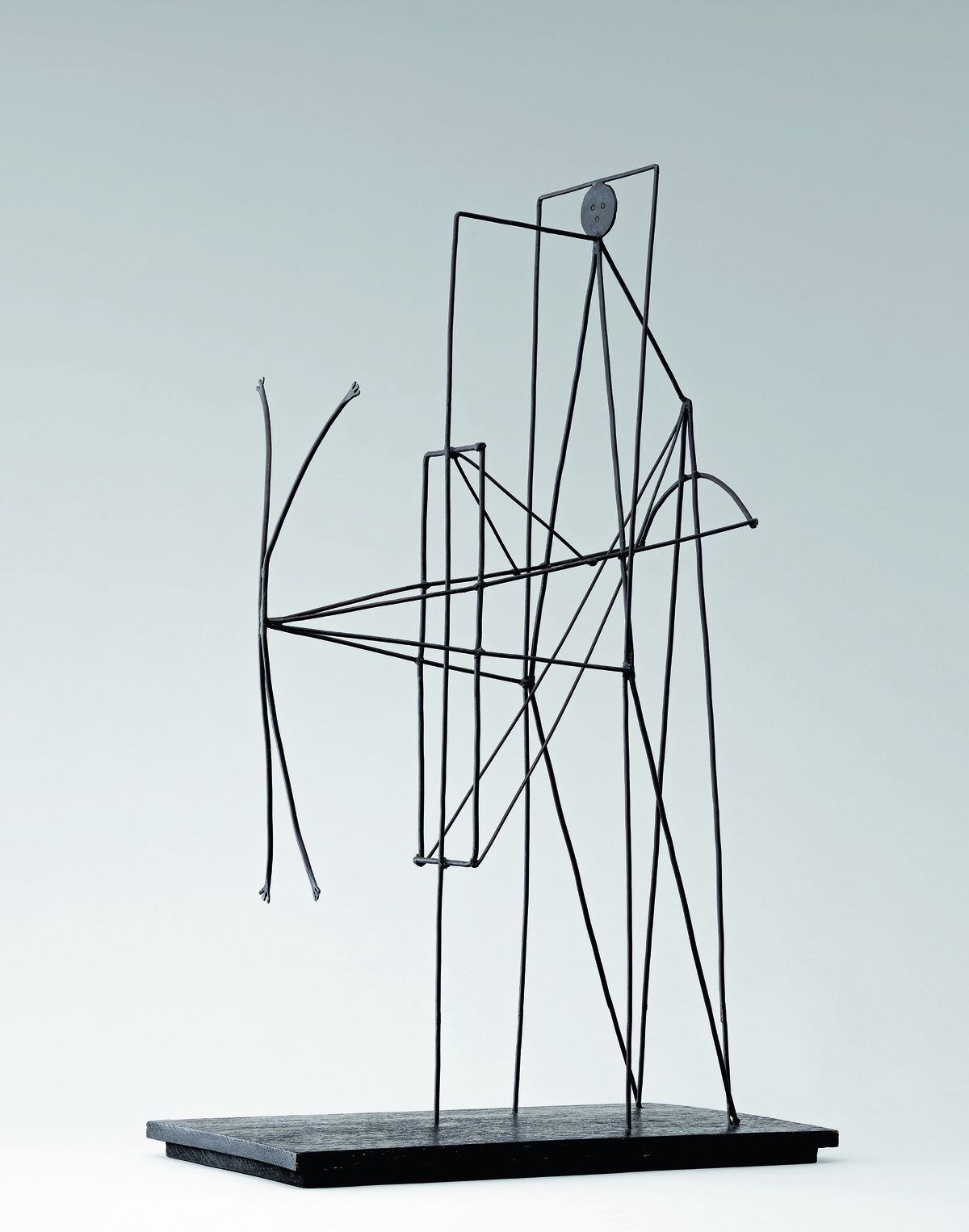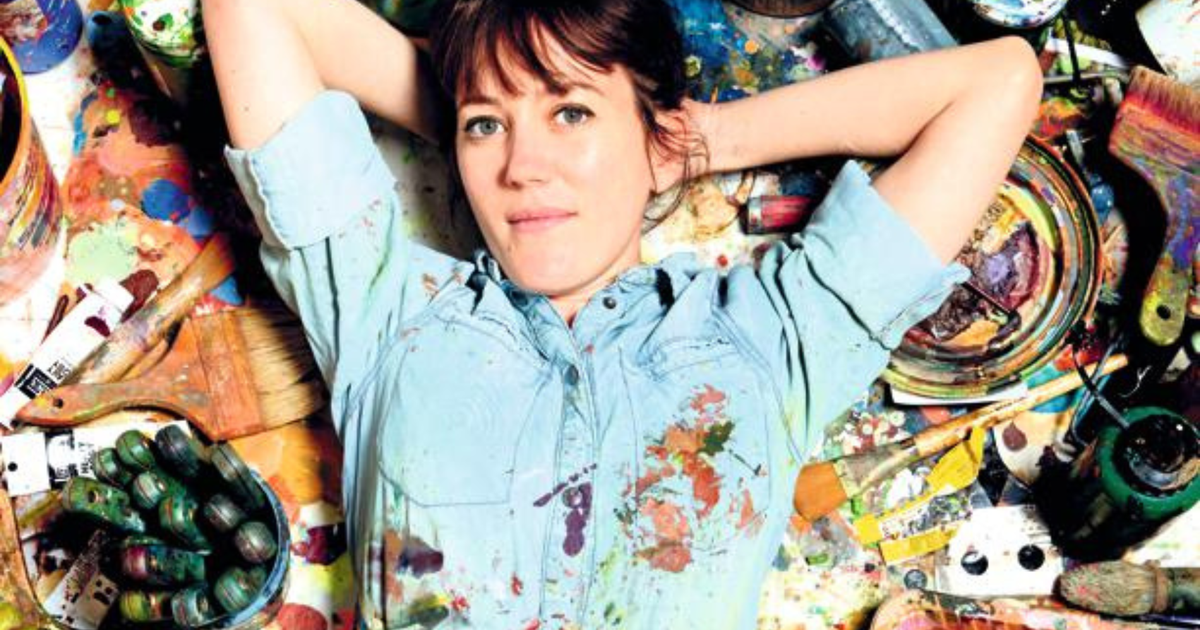Using the saddle and handlebars of an old bicycle, Pablo Picasso (Málaga, 1881-Mougins, 1973) made
Cabeza de toro
(1942), a
vanitas,
a genre that reflects on the transience of life, with which he wanted to pay homage to his great friend Julio González (Barcelona, 1876-Paris, 1942), who died suddenly at his home in Arcueil, south of Paris, on March 27, 1942 at the age of 66.
With the French capital occupied by German troops, very few people attended the funeral: the closest relatives and two artist friends, Pablo Picasso and Luis Fernández.
The
Bull's Head
is the piece chosen to start the exhibition tour
Julio González, Pablo Picasso and the dematerialization of sculpture,
which can be seen until January 8 at the Madrid headquarters of the Mapfre Foundation.
More information
Picasso takes over the world cultural scene on the 50th anniversary of his death
With more than 170 works, including sculptures, paintings and drawings on loan from large public and private collections, this exhibition is a posthumous tribute to the historian and researcher Tomás Llorens, who together with his son Boye Llorens Peters was the curator of this exhibition, considered to be one of the most important ones dedicated to the genius from Malaga on the 50th anniversary of his death.
The thesis that Tomás Llorens develops in the exhibition is the result of years of work focused on the artistic collaboration of Picasso and González.
Casilda Ybarra, curator of plastic arts at the Mapfre Foundation, explains that this thesis shows that the way they both worked with metal would have a great influence on the artistic production of the central decades of the 20th century.
Thanks to them, abstract sculpture was born, the sculptural equivalent of abstract expressionism and informalism.
'Head of a Bull' (1942), by Pablo Picasso. Pinacoteca di Brera, Milano
The idea of collaborating came from Picasso, who had been asked by a committee of experts to create a commemorative monument dedicated to the French poet Guillaume Apollinaire, who died in 1918. Ten years passed from the commissioning until the artist came up with the idea the idea of building an iron cage “with a deep statue of nothing, like poetry, like glory”, he wrote in reference to a passage from
Le poète assassiné
[The murdered poet], a more or less autobiographical novel by the writer in which the protagonist announced his own death, says Casilda Ybarra.
Capturing that piece with nothing inside became the great challenge.
Picasso then thinks of a cage because, as Tomás Llorens writes in the catalogue, “Cages give shape to the air.
They lock him up without locking him up, because there is nothing freer than air in a cage."
Appreciate beauty
The exhibition, which occupies the two main floors of the Fundación Mapfre headquarters in Madrid, traces the history of both artists separately and together, and reconstructs the historical and artistic contexts through which they moved.
To situate the visitor, remember that Julio González and Pablo Picasso met in Barcelona at the end of the 19th century in the context of late modernism.
On the labels of the rooms it is said that, at that time, the city was the scene of different debates that had a strong impact both on their respective careers and on those of other artists of their generation, such as Isidre Nonell, Joaquim Mir, Pablo Gargallo , Ricard Canals or Carles Mani.
It is also a time when the blurred line that separated the fine arts and the decorative arts began to be questioned, with the consequent rebirth of the latter, especially iron forging.
It should not be forgotten that the trades linked to construction and interior fittings then experienced a significant expansion encouraged by the rise of modernist architecture.
'Woman combing her hair I' (1931), by Julio González.Philippe Migeat
The valuation of beauty as an artistic value without more does not prevent the artists themselves from contemplating with pain the social problems inherent in a modernity that does not reach everyone equally.
The poor and the homeless are in Picasso's blue period, just as Julio González deals with them in canvases such as Mani's
Los degenerados
or in the
Little maternity with a hood
.
Friends and colleagues in modernist Barcelona, González and Picasso delved into their relationship in Paris over three decades, during which they saw each other intermittently.
In the following rooms, there is an in-depth look at how each of them reaches the dematerialization of sculpture.
They are the years that go from 1918 to 1925 and each one traces his route looking for sculpture as an action, as an idea or as a process.
'Les Miserables (Poverty)' (1903), by Pablo Picasso.Michael Pollard
Welder at the Renault
Casilda Ybarra says that Julio González, son of a goldsmith father and owner of a complete command of the welding technique learned at Renault, was the perfect complement for Picasso.
“In Paris they went a few years without speaking to each other because of Joan González, Julio's brother.
They met again in 1928 and without rancor began to work together”.
Some twenty works signed by Picasso, but made thanks to the expertise of González, populate the following rooms.
Of these, he jumps to resounding cubist examples such as Picasso's
Guitar
(1924) and Julio González's
El arlequín
(1930).
At the end of the tour, it is discussed how both tried to shape nothing in the monument dedicated to Apollinaire.
Picasso dreamed of a transparent iron sculpture, and for this he had the hands of González.
They worked together for numerous sessions between 1928 and 1932. Several figures, heads, and assemblages came out of the workshop.
Neither was to the liking of the committee that commissioned the funerary sculpture.
The most remarkable piece of all those made in that batch was
Woman in the garden,
a work that Picasso kept for his castle in Boisgeloup.
'The Harlequin / Pierrot or Colombine' (c. 1930), by Julio González.Juan García Rosell
Subscribe to continue reading
read without limits
Keep reading
I'm already a subscriber









